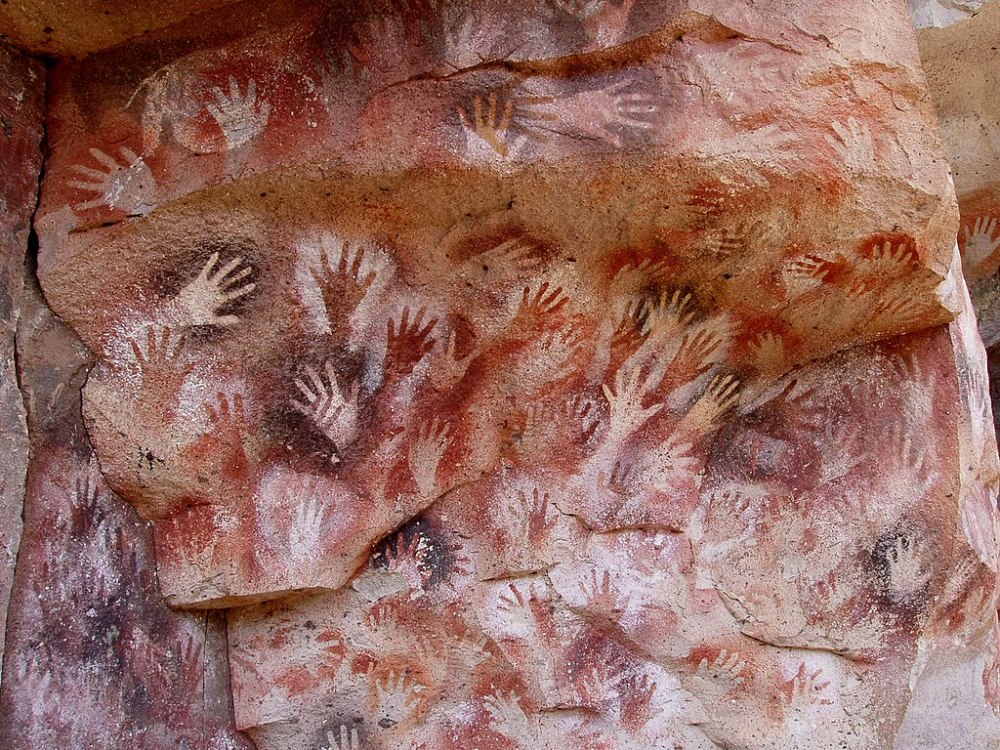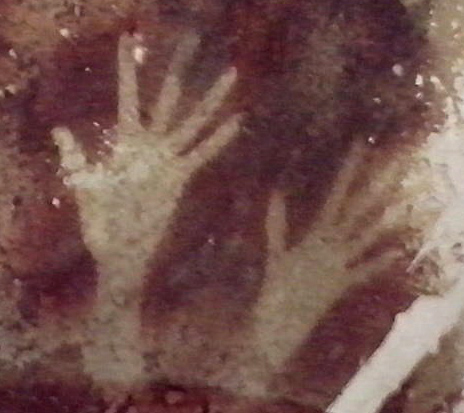Art is intended to guide society. Our early development as a species was principally based upon art, language and imagination. To our ancestors there would have been no barrier between the real and the imagined.
In the first place ‘Art’ was our sacred science, and the guiding force of culture…
Let me explain….
Cave paintings are some of the oldest forms of art in the world. There are many beliefs as to what they represent; including ideas about hunting and ceremonial rites, to the depiction of contact with extraterrestrial species. However, I have had many remarkable experiences with cave paintings, megaliths and petroglyphs, and this has led me to a conclusion regarding the practical nature of these early means of communication.
While man was developing the power of speech and self-reflection – along side there would have been the development of a stronger need to communicate through other forms such as drumming. It is perfectly possible that cave painting developed out of verbalization
The early experience of man was ‘Band’ culture. This is the form of society that existed before tribal societies grew up. From the beginning these societies were hunter-gatherers, but primarily they would have been nomadic in nature. With the need to hunt comes the need to move around with your prey. In north-west Europe – it is a widely documented fact, that the tribes of the British Isles, had very pronounced migration routes. In particular between Ireland, the north of England and Scotland – the Picts, Celts and the Scots, occupying various different regions throughout history. The prehistory of Britain would likely have been no different. This idea of migration can be extended throughout Europe. During the period just after the building of Stonehenge, for instance it is documented that a culture arose of itinerant Magi. Travelling around Europe with brass conical hats (much like wizards hats) these druids, possessed information regarding the movement of the heavens – knowledge which prior to this point would have been built inherently into the megalithic structures. These events happened upon the entering of the agrarian age, where for the first time societies were focusing more on growing crops and as such had the need to settle in one place for the first time. Prior to this the tribes of north west europe would have been no strangers to migration. The megalithic structures that were built before this time were generally aligned with stars. In fact most ancient monuments have some connection with the heavens. But whatever the nature of the knowledge these Structures were a means of relaying information – art represented a means of communication. But communicating what exactly?
In the first place – the very earliest form of art were handprints on cave walls. These were dated to some 40,000 years ago. Hand stencils have been found in various parts of the world from, Timpuseng cave Sulawesi, Indonesia to Cueva de las Manos located Perito Moreno, Argentina. The earliest known cave paintings/drawings of animals were at least 35,000 years old, these too found in caves in the district of Maros, located in Bantimurung district, South Sulawesi, Indonesia. The earliest figurative paintings in Europe date back to the Aurignacian period, approximately 30,000 to 32,000 years ago, and are found in the Chauvet Cave in France, and in the Coliboaia Cave in Romania.
There are also similar later paintings in Africa, Australia and South America, continuing until recent times in some places. There is a tendency worldwide for open air rock art to supersede deep cave paintings.
However these hand stencils, were more than just a means of self-reflection and self-identification. Rather they were a means of identifying yourself to others. They were a signature to allow others to know who had been present at a specific place at a specific time. People who knew you, would have also know your handprint, and from this your whereabouts. Keeping track of each others movements in this early age would have been of vital importance. This information could have been mapped by leaving these markings. Also the movements and quantity of availability of game – marked in codes known only to the other members of the tribe. This would account for animal depictions seen in some of the earliest paintings.
To some extent there would have been a link to the spiritual side of the existence for the tribe. In as much as these stencils and paintings were a description of their outer world – they would have undoubtedly been also a representation of the inner world. Perhaps visions of prey, hunting and actual places or event were depicted as the same reality. For our ancestors there was little or no separation from the spirit; very different from our postmodernist approach of seeing spiritual practice as something separate from the rest of your life. Early man would have lived in accordance with the spirit – an existence uncorrupted and undivided by the passage of time.
So knowing where your friends family and allies were – would been an essential strategy for survival. I have no doubt – that this ritual became quite a developed science and subsequently an “art”, to the people of the Neolithic period. It would have developed alongside the growth and development of their civilisation. Bringing in more elements of ritualistic practice into sacred space. Making it more a representation of the abstract rather than the physical world. The need to map the outer world becoming less important over time as the balance tipped towards the metaphysical, as man’s success was assured.
But for the early ancestors looking to the stars for guidance – was also a cause and inspiration for how they decorated their world – perhaps they imagined messages from the gods written into the code of the celestial bodies and mapped the heavens as a direct guidance for their well-being and development too.

~ Toltec Warrior




I like the style of this website, apart from the interesting topics presented in it. Thank you staticgaze!
Learning to get a feel of past human expressions, be it art or a shelter for living, there’s a book that helps me much, called “The spell of the sensuous” by David Abram.
Here’s the free download PDF of the book: https://archive.org/details/AbramTheSpellOfTheSensuousPerceptionAndLanguageInAMoreThanHumanWorld
To me, the value of this book is timeless, for it’s as much about understanding expressions of the present, through awareness of the senses, using their messages as way-showers and valuable tools for discernment. I’m on a “natural” journey within, like witnessing a dawn of my inner world, with great relief stepping off the high speed train of the journey without 😉
LikeLiked by 1 person
Devon SeaMoor thank you for the link…. i will look into the book you’re talking about…
Also, i finally got round to looking at your site, which is if you don’t mind me saying artistically verry stunning!
I hope you will visit more often – i only post occasionally but it is when the spirit seizes me
~ TW
LikeLike